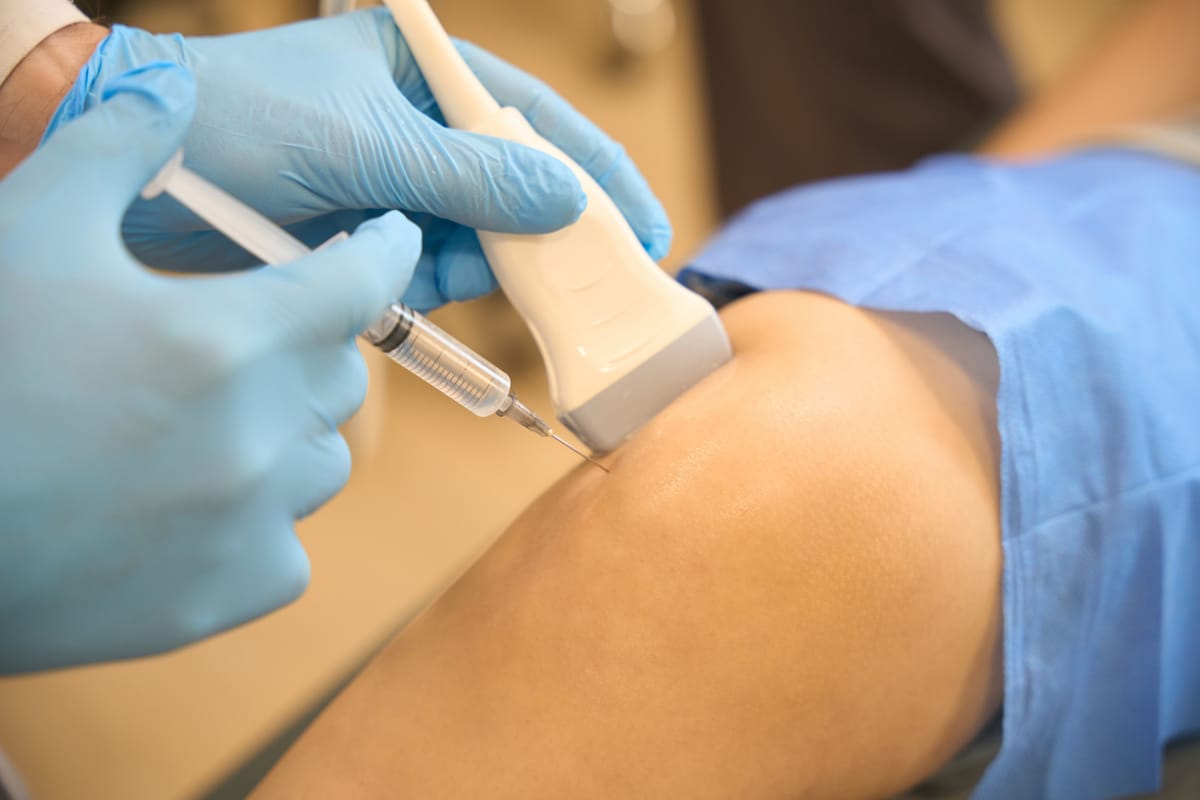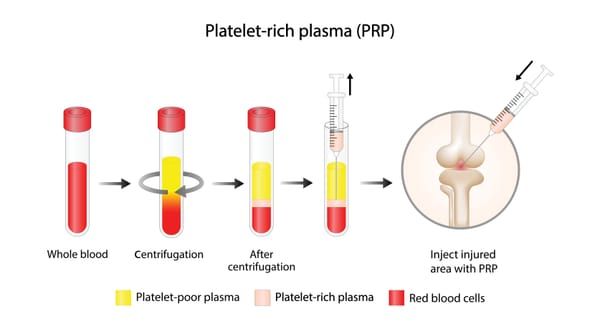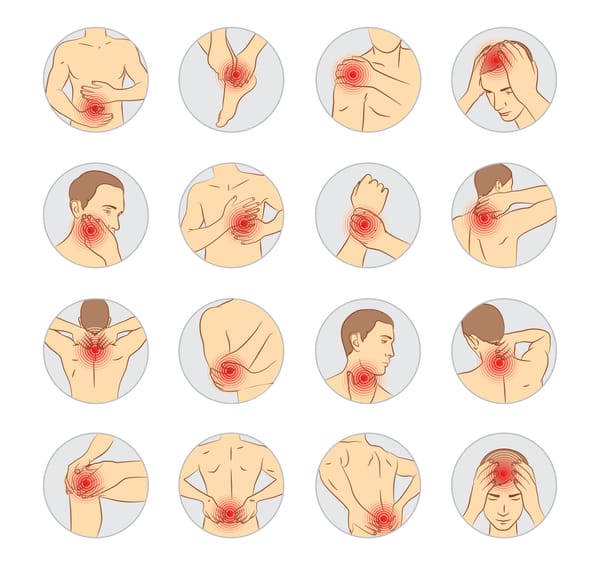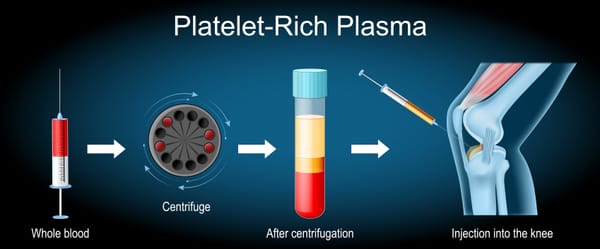Knee Pain and Ultrasound-Guided Injections: A Guide to Targeted Relief

Knee pain can be a major hurdle, whether it’s from an injury, overuse, or a chronic condition like arthritis. It can turn simple activities like walking, climbing stairs, or even sitting into a challenge. While rest, physical therapy, or medications often help, some cases call for more precise interventions. Ultrasound-guided injections offer a minimally invasive way to deliver treatment directly to the source of pain, improving outcomes with pinpoint accuracy. In this blog post, we’ll explore the causes of knee pain and the different ultrasound-guided injections used to treat it, explained clearly for a general audience.
Understanding Knee Pain
The knee is a complex hinge joint that supports body weight and enables movement, relying on bones (femur, tibia, patella), cartilage (menisci and articular cartilage), ligaments (ACL, MCL), tendons, and bursae. Its heavy workload makes it prone to injury and degeneration. Common causes of knee pain include:
- Osteoarthritis: Cartilage breakdown causing joint pain and stiffness.
- Meniscal Tears: Damage to the shock-absorbing cartilage from twists or wear.
- Tendinitis: Inflammation of tendons, like the patellar tendon in “jumper’s knee.”
- Bursitis: Inflammation of fluid-filled sacs, often from repetitive pressure.
- Ligament Injuries: Sprains or tears (e.g., ACL or MCL) from trauma or sports.
- Patellofemoral Pain Syndrome (PFPS): Pain around the kneecap from misalignment or overuse.
Symptoms range from aching and stiffness to sharp pain, swelling, or instability. When conservative treatments like ice, bracing, or physical therapy fall short, ultrasound-guided injections can provide targeted relief, often delaying or avoiding surgery.
Why Ultrasound-Guided Injections?
Ultrasound-guided injections use real-time imaging to guide a needle precisely to the affected area, such as a joint, tendon, or bursa. This approach offers several advantages over “blind” injections:
- Accuracy: Ensures medication reaches the exact pain source.
- Safety: Minimizes risk of damaging nearby nerves or blood vessels.
- Effectiveness: Improves outcomes by delivering treatment where it’s needed most.
- Comfort: Reduces discomfort with precise needle placement.
Performed by specialists, these outpatient procedures take 15-30 minutes, with minimal downtime. They’re especially valuable for inflammatory or degenerative knee conditions.
Types of Ultrasound-Guided Injections for Knee Pain
Several ultrasound-guided injections are used to address knee pain, each tailored to specific conditions. Here’s an overview of the most common options:
1. Corticosteroid Injections
- What They Are: A mix of a corticosteroid (e.g., triamcinolone or methylprednisolone) and a local anesthetic (e.g., lidocaine) to reduce inflammation and pain.
- Target Conditions: Knee osteoarthritis, rheumatoid arthritis, bursitis, or synovitis (inflamed joint lining).
- How They Work: The corticosteroid decreases inflammation in the joint or bursa, while the anesthetic provides immediate pain relief.
- Procedure: Using ultrasound, the doctor injects the mixture into the knee joint (intra-articular), suprapatellar bursa, or other inflamed areas.
- Benefits: Relief often begins within days and can last weeks to months. A 2019 study in Arthritis Care & Research found that 60-70% of osteoarthritis patients reported significant pain reduction at eight weeks.
- Considerations: Relief is temporary, and repeated injections (more than 2-3 per year) may weaken cartilage or tendons. Not ideal for patients with diabetes due to potential blood sugar spikes.
2. Hyaluronic Acid Injections (Viscosupplementation)
- What They Are: Injections of hyaluronic acid, a gel-like substance that mimics the knee’s natural joint fluid.
- Target Conditions: Knee osteoarthritis, particularly when corticosteroids aren’t suitable or effective.
- How They Work: Hyaluronic acid lubricates and cushions the joint, reducing friction and pain, and may support cartilage health.
- Procedure: Ultrasound guides the injection into the knee joint, ensuring accurate delivery.
- Benefits: Can improve mobility and reduce pain for 3-12 months. A 2020 meta-analysis in The Journal of Bone and Joint Surgery reported 50% of osteoarthritis patients had moderate pain relief at six months.
- Considerations: Requires 1-5 weekly injections, depending on the formulation. Less effective for severe arthritis, and insurance coverage varies. Some patients experience mild swelling post-injection.
3. Platelet-Rich Plasma (PRP) Injections
- What They Are: A concentrate of platelets from your own blood, rich in growth factors to promote tissue repair.
- Target Conditions: Knee osteoarthritis (mild to moderate), patellar tendinitis, or partial meniscal tears.
- How They Work: PRP stimulates healing in cartilage, tendons, or menisci, potentially reducing inflammation and pain.
- Procedure: Blood is drawn, processed to isolate platelets, and injected into the affected area (e.g., joint or tendon) under ultrasound guidance.
- Benefits: May offer longer-term relief (6-12 months) and support tissue regeneration. A 2021 study in American Journal of Sports Medicine found PRP reduced pain and improved function in 65% of osteoarthritis patients at one year.
- Considerations: Costly (often $500-$2,000 per injection) and typically not covered by insurance. Results take weeks and vary by condition severity. More research is needed for optimal protocols.
4. Prolotherapy
- What They Are: Injections of a dextrose (sugar) solution to irritate tissue and stimulate the body’s repair response.
- Target Conditions: Chronic patellar tendinitis, ligament laxity, or mild osteoarthritis.
- How They Work: The solution triggers mild inflammation, encouraging collagen growth to strengthen tendons or ligaments.
- Procedure: Ultrasound guides the injection to specific tendons (e.g., patellar) or ligaments around the knee.
- Benefits: May improve stability and reduce pain over months. A 2019 study in Pain Physician reported 55% of patients with chronic knee pain had improved function after 4-6 sessions.
- Considerations: Requires multiple sessions (4-8, spaced weeks apart), and evidence is limited compared to other injections. Temporary soreness is common post-injection.
5. Genicular Nerve Blocks
- What They Are: Injections of anesthetic (sometimes with a corticosteroid) targeting the genicular nerves, which transmit pain signals from the knee.
- Target Conditions: Chronic knee osteoarthritis or post-surgical pain, especially when joint injections aren’t effective or surgery isn’t an option.
- How They Work: Blocks pain signals from the knee, providing temporary relief and aiding physical therapy.
- Procedure: Ultrasound guides the needle to the genicular nerves (superior medial, superior lateral, or inferior medial branches) around the knee.
- Benefits: Can provide immediate relief lasting days to weeks. A 2020 study in Regional Anesthesia & Pain Medicine found 60% of osteoarthritis patients had significant pain reduction for up to three months.
- Considerations: Relief is temporary, and repeat blocks may be needed. Risks include nerve irritation, though rare with ultrasound guidance. Often used as a bridge to other treatments or radiofrequency ablation.
What to Expect from Ultrasound-Guided Injections
Here’s a general overview of the process:
- Preparation: Your doctor will review your medical history, symptoms, and imaging (e.g., X-ray or MRI) to confirm the diagnosis and select the best injection. You may need to pause blood thinners or NSAIDs temporarily.
- Procedure: You’ll sit or lie down, and the doctor will use ultrasound to visualize the target (e.g., joint, tendon, or nerve). After cleaning the skin, they’ll insert a thin needle and inject the medication. Mild discomfort or pressure is normal but brief.
- Recovery: Most patients resume normal activities within a day, though heavy exercise may be restricted for 1-2 weeks. Relief timelines vary—corticosteroids act within days, while PRP or prolotherapy takes weeks to months.
- Side Effects: Common side effects include mild soreness, bruising, or swelling at the injection site. Rare risks include infection, nerve injury, or cartilage damage (with frequent corticosteroids).
Benefits and ConsiderationsBenefits:
- Precise delivery enhances effectiveness and reduces complications.
- Can delay or avoid surgery for conditions like osteoarthritis or tendinitis.
- Supports rehabilitation by reducing pain, allowing better participation in physical therapy.
- Minimally invasive with quick recovery.
Considerations:
- Effectiveness depends on the condition, injection type, and patient factors (e.g., age or disease severity).
- Some injections (PRP, hyaluronic acid) are expensive and often not covered by insurance.
- Relief may be temporary, requiring repeat injections or complementary treatments.
- Severe cases (e.g., large meniscal tears or advanced arthritis) may still need surgery.
Are Ultrasound-Guided Injections Right for You?
Ultrasound-guided injections are typically considered when conservative treatments (rest, physical therapy, or oral medications) fail to provide relief, but before resorting to surgery. They’re ideal for inflammatory or degenerative conditions like osteoarthritis, tendinitis, or bursitis.
Your doctor will evaluate:
- The cause and extent of your knee pain, using exams and imaging.
- Your overall health (e.g., diabetes or bleeding disorders may limit options).
- Your goals, such as pain reduction, improved mobility, or avoiding surgery.
Before proceeding, discuss the risks, benefits, and expected outcomes with your provider. Choosing a specialist experienced in ultrasound-guided techniques is critical for safety and success.
Looking Ahead
Ultrasound-guided injections are a game-changer for managing knee pain, offering targeted relief with minimal downtime. They’re not a cure, but they can significantly improve quality of life and complement other treatments like physical therapy or bracing. Ongoing research, including trials listed on Clinicaltrials.gov, continues to refine these approaches, with PRP and regenerative therapies showing growing potential.
If knee pain is holding you back, talk to a specialist about whether ultrasound-guided injections could help. Online communities, like those on Reddit or through the Arthritis Foundation, can also offer support and insights from others with similar experiences.
Knee pain doesn’t have to slow you down. With tools like ultrasound-guided injections, relief is within reach—take the first step and explore your options today.
Disclaimer: This blog post is for informational purposes only and not a substitute for professional medical advice. Consult a healthcare provider before considering ultrasound-guided injections or any new treatment for knee pain.



